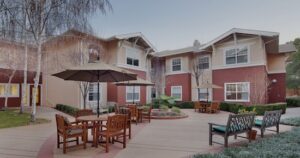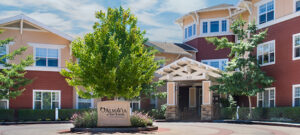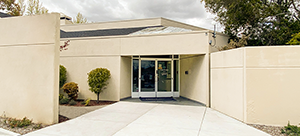With so many terms, options and styles, it’s easy to feel overwhelmed when it comes to senior living. When choosing retirement options having a clear and concise understanding is crucial to making the right decision in a home. We’ve clarified common terminology when it comes to senior housing. Use this “Senior Living 101” to guide you in your search.
Types of communities
Different retirement communities offer various levels of care and different types of contracts.
Continuing care retirement communities (CCRC)
Continuing care retirement communities (CCRC) provide a comprehensive range of services to allow residents remain on campus as their care needs change. CCRCs are a popular option because residents can stay on the same campus they call home as they move through different care settings. Also known as a Life Plan Community, residents have the opportunity to form long-term relationships with staff and other residents, as well as stay in their home if their partner’s care needs change.
There is normally an entrance fee associated with a continuing care contract as well as monthly charges. The initial entrance fee is similar to a down payment and must be paid in full before you enter the community. A repayable entrance fee tends to cost less, but no refund is given after the resident moves out or passes away. Repayable entrance fees usually comes with a larger price tag, but offers a percentage to be repaid after a resident moves out or passes away.
Independent living communities
Independent living communities are a popular choice for active, healthy older adults who are able to live on their own but want a community environment. There are usually options for homes, townhouse, condos and apartments. These 55+ communities offer amenities like community areas, fitness centers, a calendar of activities and social opportunities. Note: Independent living is not the best option for aging in place; as your health declines a need for relocation might be inevitable.
Independent living communities usually charge monthly fees similar to an apartment complex, accepting private pay only. Since many communities are less hospitality oriented, only a few basic services may be included like housekeeping, maintenance repairs and transportation. Each community varies in individual costs and services and pricing can be affected by a second-person or community fee.
Assisted living communities
Assisted living communities provide independence with caring support. Services are available to older adults who need assistance with personal care, coordination of health services, medication management and other daily tasks. Assisted living residents are mobile, active in the community and typically have care plans based on the individual’s level of need.\
Assisted living costs vary and are dependent on numerous factors like the type of residence, size of apartment, types of services needed and location of the community. Fees can vary based on the community – some charge a flat rate that covers basic services and then special services are additional. Some have all-inclusive pricing. Some communities use an a la carte approach, so residents only pay for services they need. Most communities accept only private pay, not Medicare, however some residents use Medicaid to help pay for their health care.
Memory care
Memory care programs are for individuals with moderate or advanced cognitive impairment, dementia or Alzheimer’s disease. Older adults with memory loss can continue to enjoy their lives in specially designed communities that have personalized programming. Having trained professionals provide specialized support is recommended for caregivers trying to care for their loved ones at home.
With the extra services included in memory care, it is standard to expect a premium of around 40 percent over the costs of standard assisted living. Most rates are all-inclusive for basic care but additional required services could cost extra.
Skilled nursing
Skilled nursing provides rehabilitation and nursing services 24 hours a day by registered nurses and doctors. Skilled nursing is often temporary with the goal of moving residents back to their homes; patients usually go to a skilled nursing facility after being release from the hospital so they can recover from injuries, illnesses or surgeries. Services typically include but are not limited to physical therapy, occupational therapy and speech therapy.
Typically Medicare covers skilled nursing care provided in a facility for a limited time if certain conditions are met. Your health care provider may recommend you get services more often than it covers. The national average length of stay in a skilled nursing facility is 28 days.
When choosing a senior living community, it is important to learn as much as possible. We hope this guide is a helpful starting point to make a fully informed decision.




















